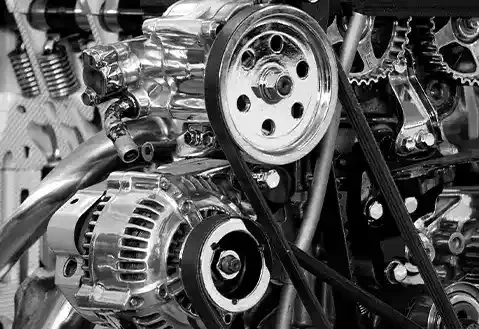- Arabic
- French
- Russian
- Spanish
- Portuguese
- Turkish
- Armenian
- English
- Albanian
- Amharic
- Azerbaijani
- Basque
- Belarusian
- Bengali
- Bosnian
- Bulgarian
- Catalan
- Cebuano
- Corsican
- Croatian
- Czech
- Danish
- Dutch
- Afrikaans
- Esperanto
- Estonian
- Finnish
- Frisian
- Galician
- Georgian
- German
- Greek
- Gujarati
- Haitian Creole
- hausa
- hawaiian
- Hebrew
- Hindi
- Miao
- Hungarian
- Icelandic
- igbo
- Indonesian
- irish
- Italian
- Japanese
- Javanese
- Kannada
- kazakh
- Khmer
- Rwandese
- Korean
- Kurdish
- Kyrgyz
- Lao
- Latin
- Latvian
- Lithuanian
- Luxembourgish
- Macedonian
- Malgashi
- Malay
- Malayalam
- Maltese
- Maori
- Marathi
- Mongolian
- Myanmar
- Nepali
- Norwegian
- Norwegian
- Occitan
- Pashto
- Persian
- Polish
- Punjabi
- Romanian
- Samoan
- Scottish Gaelic
- Serbian
- Sesotho
- Shona
- Sindhi
- Sinhala
- Slovak
- Slovenian
- Somali
- Sundanese
- Swahili
- Swedish
- Tagalog
- Tajik
- Tamil
- Tatar
- Telugu
- Thai
- Turkmen
- Ukrainian
- Urdu
- Uighur
- Uzbek
- Vietnamese
- Welsh
- Bantu
- Yiddish
- Yoruba
- Zulu
11月 . 07, 2024 14:31 Back to list
Power Transmission Belts and Their Applications in Mechanical Systems
Understanding Transmission Belts in Power Transmission Systems
Transmission belts play a crucial role in modern mechanical systems, serving as a fundamental component in the transfer of power from one part of the machinery to another. These flexible bands or loops are designed to transmit mechanical energy through friction and tension, and they are widely employed in various applications, from simple machines to complex industrial setups. In this article, we will explore the types of transmission belts, their applications, and the advantages they offer in power transmission.
Types of Transmission Belts
Transmission belts come in several types, each tailored for specific applications. The most common categories include
1. V-Belts Shaped like a V, these belts fit into corresponding grooves on the pulleys, providing a tighter grip and effective power transmission. They are commonly used in automotive engines, HVAC systems, and agricultural machinery.
2. Flat Belts Flat belts are rectangular in cross-section and are used in applications where slip is minimal. They are often employed in traditional manufacturing equipment, such as conveyor systems and lathes.
3. Timing Belts Featuring teeth that interlock with corresponding grooves on the pulleys, timing belts are designed to ensure synchronous movement between components. They are prevalent in automotive timing systems and other precise mechanical applications.
4. Round Belts These belts are circular in cross-section and are often used in small-scale applications, like lightweight conveyor systems and printers. Their flexibility allows for easier installation and operation.
Applications of Transmission Belts
Transmission belts are utilized in a vast array of applications across numerous industries
. In automotive engineering, they are integral to the efficient operation of engines, facilitating the connection between the crankshaft and various engine components like alternators, water pumps, and air conditioning compressors.In manufacturing and material handling, conveyor belts serve the purpose of moving goods and materials from one location to another efficiently. This application can be seen in supermarket checkout lines, airport luggage systems, and packaging systems.
transmission belt\/power transmission belt

Additionally, transmission belts are critical in the textile industry, where they drive spinning and weaving machines. Their ability to transmit power over long distances makes them invaluable in settings that require continuous motion and reliability.
Advantages of Transmission Belts
The use of transmission belts in power transmission systems comes with several advantages
1. Efficiency Belts generally have good energy transfer efficiency compared to other systems such as gears. This translates into less energy loss, which, in turn, leads to lower operational costs.
2. Flexibility Transmission belts can easily accommodate a range of speeds and loads, allowing manufacturers to adjust systems based on varying production requirements.
3. Reduced Noise Compared to gear systems, belts often operate with reduced noise levels, creating a more pleasant working environment.
4. Cost-effectiveness Belts are usually more affordable to manufacture and maintain than more complex transmission methods like chains or gears.
5. Easy Installation and Replacement Many types of transmission belts can be installed and replaced with relative ease, minimizing downtime in operations.
Conclusion
Transmission belts remain an indispensable part of mechanical power transmission systems in today's industry. Their diverse applications, coupled with their efficiency and reliability, make them essential, from automotive engines to manufacturing equipment. As technology continues to evolve, we can anticipate further innovations in belt design and materials, leading to even greater efficiency and performance in power transmission. Understanding the various types of belts and their applications is crucial for industries aiming to optimize their processes and ensure seamless operations.
-
Korean Auto Parts Timing Belt 24312-37500 For Hyundai/Kia
NewsMar.07,2025
-
7PK2300 90916-T2024 RIBBED BELT POLY V BELT PK BELT
NewsMar.07,2025
-
Chinese Auto Belt Factory 310-2M-22 For BMW/Mercedes-Benz
NewsMar.07,2025
-
Chinese Auto Belt Factory 310-2M-22 For BMW/Mercedes-Benz
NewsMar.07,2025
-
90916-02660 PK Belt 6PK1680 For Toyota
NewsMar.07,2025
-
drive belt serpentine belt
NewsMar.07,2025

